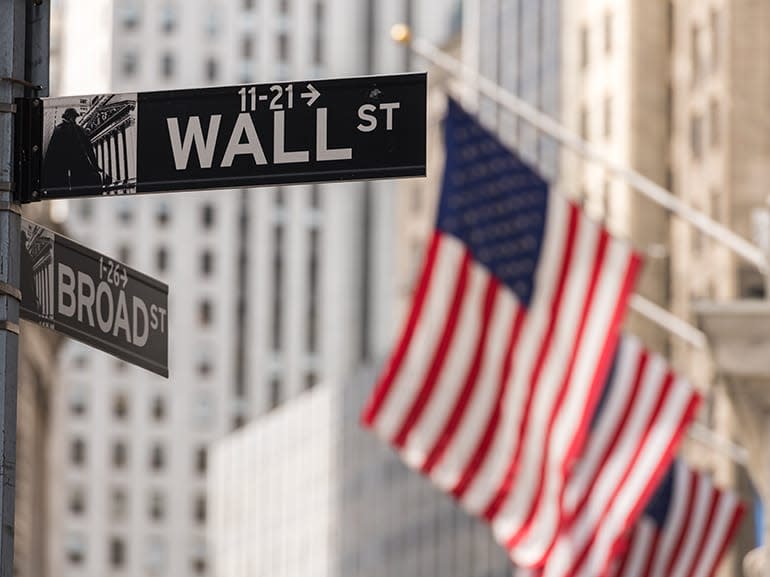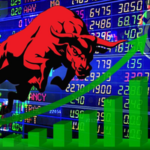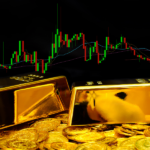Over the past week, Wall Street traders and investors have been thrown into a state of chaos, attempting to devise strategies and reassure clients as the stock market’s value plummeted by trillions. This unprecedented market turbulence came after U.S. President Donald Trump announced sweeping tariffs on April 2, which sent shockwaves across global markets.
Trump’s tariff policy raised U.S. trade barriers to their highest levels in over a century, triggering fears of a potential economic crisis. The S&P 500 index, which measures the performance of 500 of the largest publicly traded companies in the U.S., experienced dramatic fluctuations. The index slumped from its February high, with many investors bracing for a bear market.
As the tariff news rippled through the market, the Cboe Volatility Index (VIX), also known as Wall Street’s “fear gauge,” spiked to its highest level since the COVID-19 pandemic in 2020. This surge reflected mounting investor anxiety as they anticipated worsening economic conditions.
A Sudden Reversal Sparks Hope
However, just as panic reached a fever pitch, President Trump made a stunning U-turn. On Wednesday, he announced that he would temporarily lower tariffs on dozens of countries, while also intensifying pressure on China. The surprise shift in policy sent the S&P 500 soaring, with the index registering its largest one-day gain since October 2008 — nearly a 10% jump.
The abrupt change in direction triggered a massive relief rally on the trading floors, but it also added to the growing uncertainty. Despite the immediate surge, investors remain wary of the unpredictable nature of the U.S. government’s tariff policies.
“It’s been quite a wild ride,” said Joe Tigay, portfolio manager for Rational Equity Armor Fund, drawing parallels to the massive swings seen during the pandemic, according to Reuters. “Personally, honestly, this is what I live for.”
Traders Juggle Client Concerns Amid Market Whiplash
The rapid developments left traders scrambling to juggle a host of responsibilities — from making sense of the volatile market to providing frequent updates to anxious clients. Chris Murphy, co-head of derivative strategy at Susquehanna Financial Group, likened the situation to the intensity of the March 2020 COVID crash, but with a key difference: “This is more headline driven than what we saw in COVID. There’s just not enough time because you’re going from one thing to the next.”
Many advisors, such as Gina Bolvin, president of Bolvin Wealth Management Group, found themselves in constant communication with clients, some of whom were especially nervous as market losses mounted. “We reached out to as many clients as possible via a client letter and phone calls,” she said. “Some of my nervous clients were comforted when they learned that as the market was declining, I had been investing some of my own money.”
Cautious Optimism Amid Uncertainty
Despite the brief relief rally, many analysts are urging caution. While the temporary tariff reprieve offers hope, concerns about the longer-term effects of Trump’s unpredictable policies persist. Mark Hackett, chief market strategist at Nationwide Investment Management Group, warned against getting overly excited about short-term gains. “8% rallies in 20 minutes in the Nasdaq aren’t a heck of a lot healthier than 8% declines,” he said.
Indeed, some investors fear that the constant back-and-forth on tariffs could continue to undermine market stability, hindering corporate planning and influencing consumer behavior. “They hit the pause button and the market rejoiced,” said Alex Morris, chief investment officer at F/m Investments. “But of course, there is no promise that we’ll manage to solve anything in 90 days.”
The ‘Trump Put’ and Market Sensitivity
For many investors, the most striking aspect of the past week’s market drama has been the return of what some call the “Trump put.” This term refers to the belief that Trump would reverse policy decisions if markets began to show signs of distress. Talley Leger, chief market strategist at The Wealth Consulting Group, remarked, “I think this is a reminder that Trump does not want a bear market in stocks, and he does not want a recession.”
However, the constant unpredictability has made many question how long the “Trump put” can remain effective. Deutsche Bank analysts cautioned that while temporary tariff suspensions may provide some relief, the damage caused by the ongoing policy shifts will leave a lasting impact on the economy. “Even if the tariffs are permanently suspended, damage has been done to the economy via a permanent sense of unpredictability in policy,” they noted.
Bond Market’s Role in the Chaos
As the market grappled with tariff news, attention also turned to the U.S. Treasury market, which saw a sharp sell-off, exacerbating the financial instability. Some market participants were forced to sell liquid assets such as Treasuries to meet margin calls, further fueling the volatility.
“There’s definitely sensitivity to what happens in the Treasury market,” said Matt Orton, chief market strategist at Raymond James Investment Management. “If something breaks in the Treasury market, that could be very, very bad.” President Trump, however, downplayed the situation, telling reporters on Wednesday, “The bond market now is beautiful.”
A Week of Extreme Volatility
The series of events since Trump’s tariff announcement on April 2 has been marked by record-breaking price swings. On Monday, the S&P 500 saw an 8.1% intra-day move, while Tuesday witnessed one of the biggest reversals in the index in at least 50 years. Wednesday’s market turnaround was just as dramatic, with the day’s range of 10.7% ranking among the largest in history.
For Gina Bolvin, it was a stressful week. “When my 3-year-old woke up and asked if the market was down, I knew we were close to the bottom,” she said, summing up the emotional rollercoaster that many investors faced in recent days.
Unpredictability Reigns Supreme
Despite the brief respite provided by the announcement of lowered tariffs, uncertainty still reigns over U.S. trade policy. Investors will be watching closely as the situation evolves, with no clear end in sight. For now, Wall Street’s volatility remains a stark reminder of how quickly fortunes can change — and how elusive true stability has become in the current market environment.






